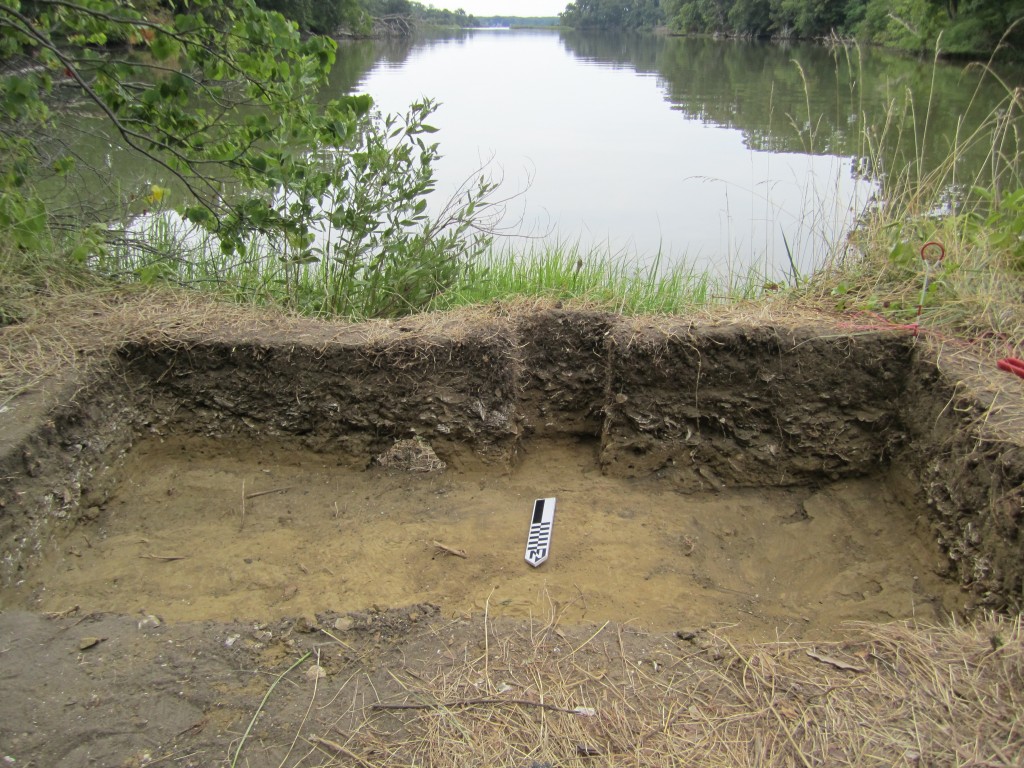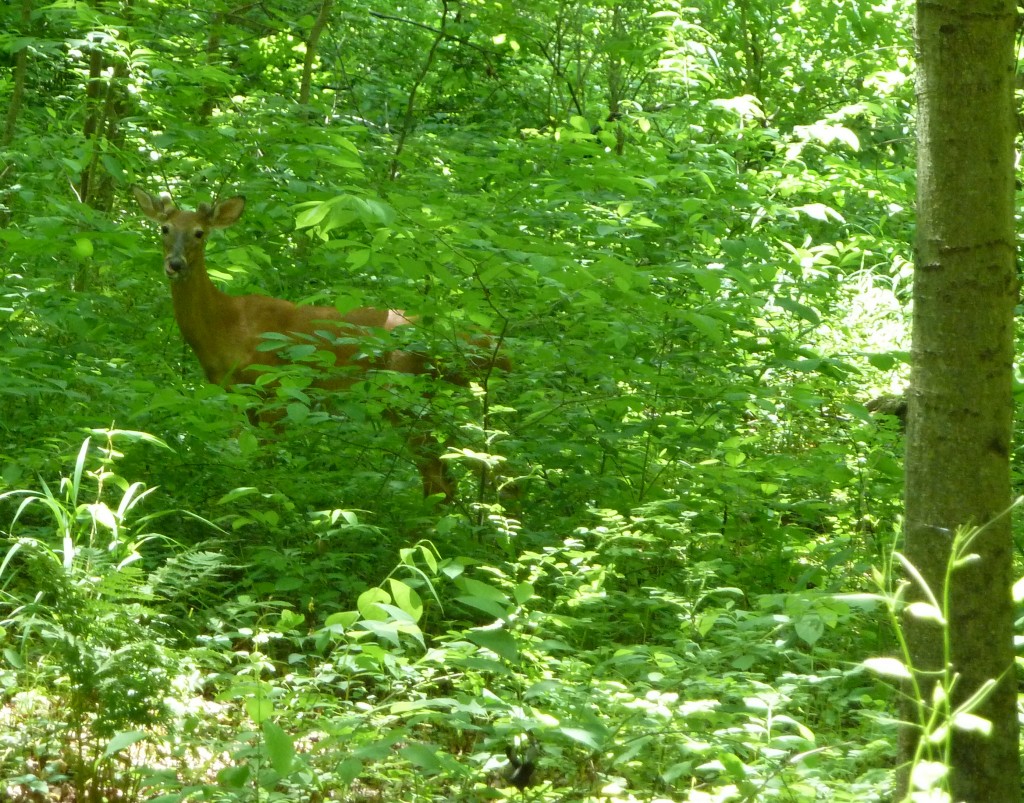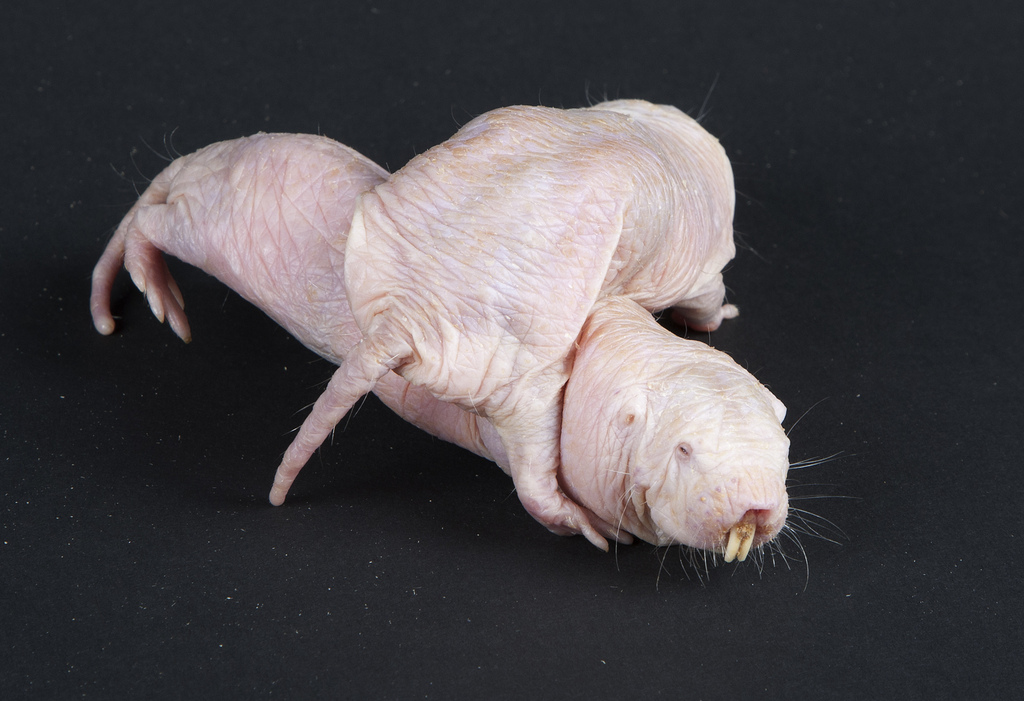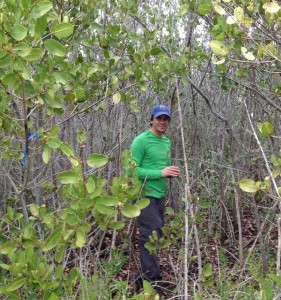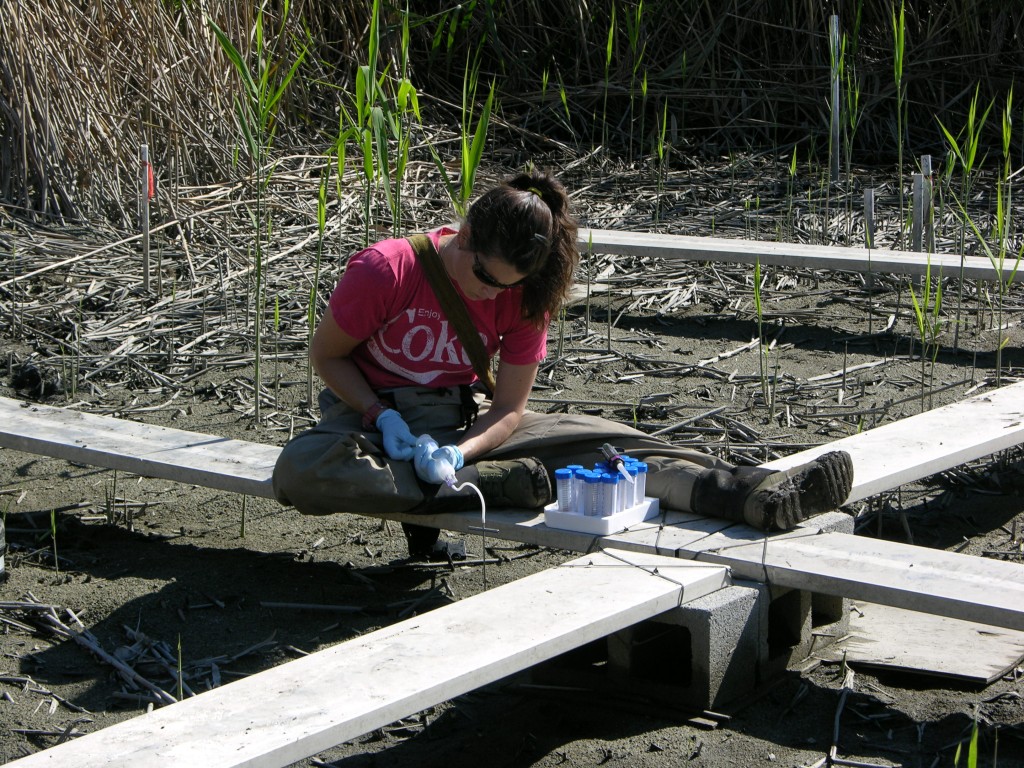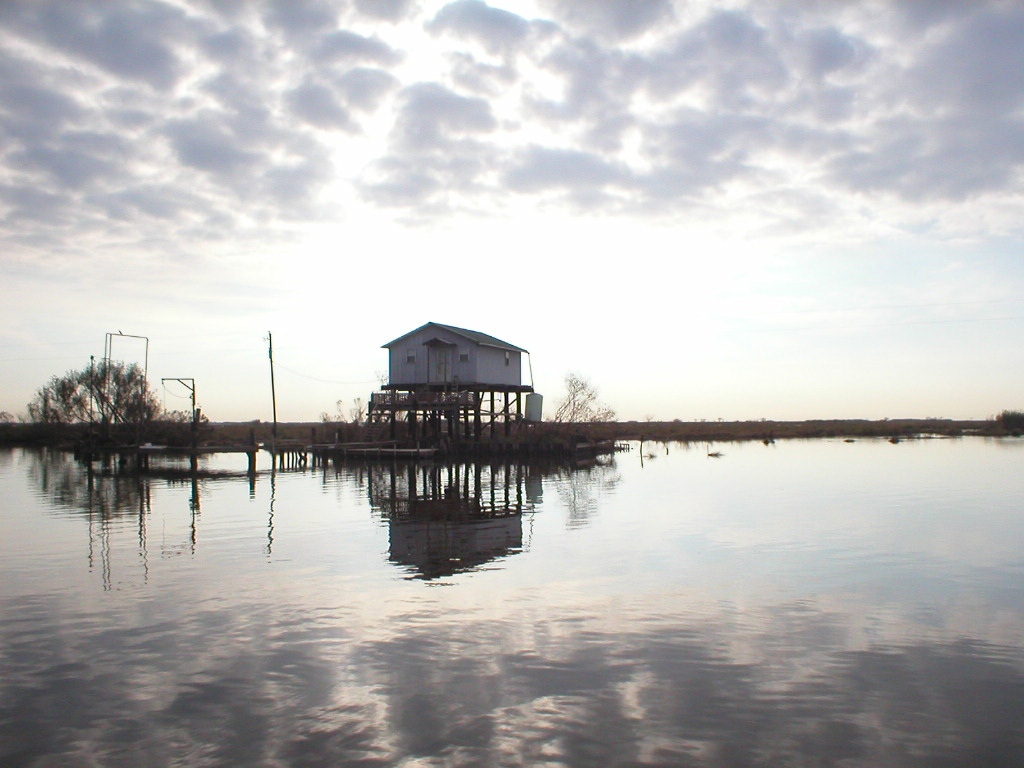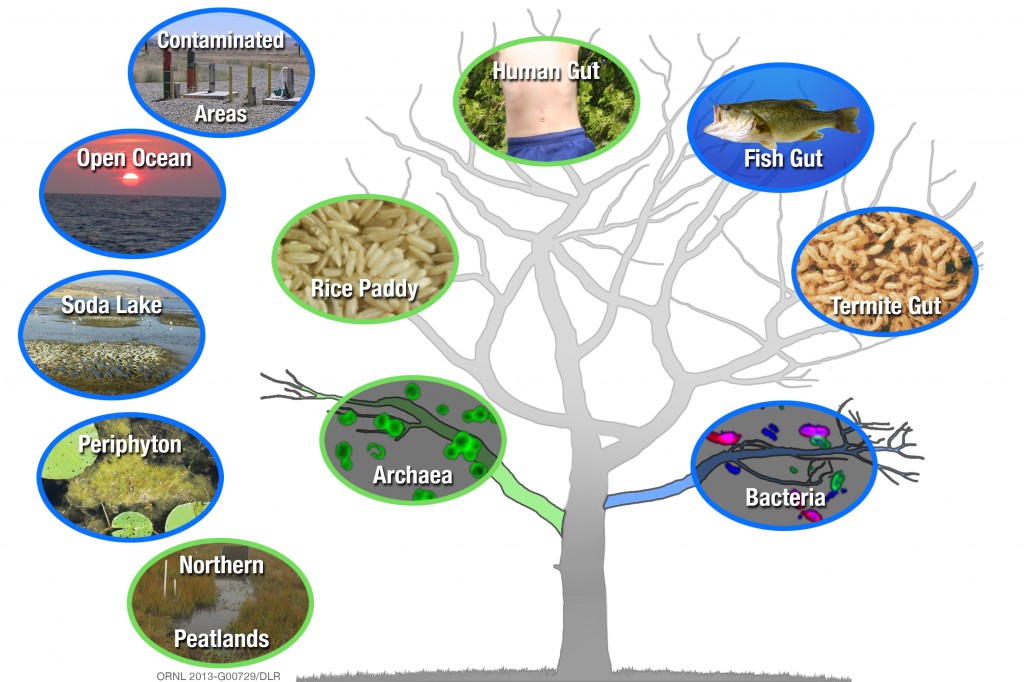By Katie Sinclair
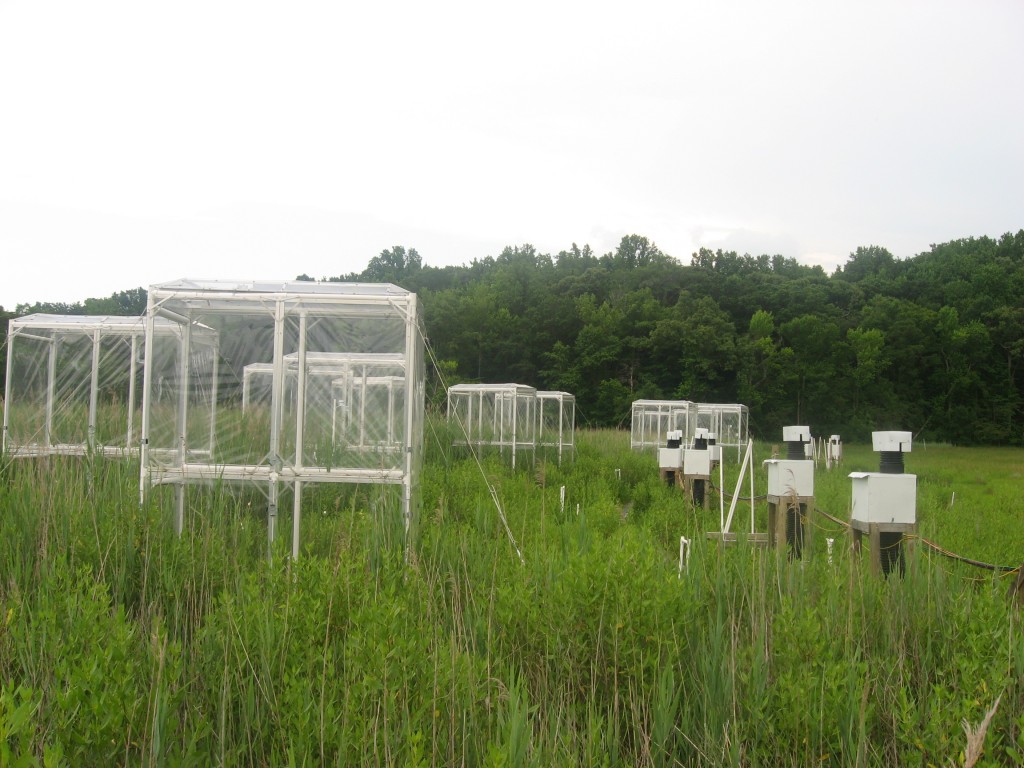
These chambers at Kirkpatrick Marsh allow the amount of CO2 and nitrogen to be manipulated, allowing researchers to understand how climate change will affect the growth of Phragmites.
An invasive reed from Europe is conquering marsh habitat throughout the Chesapeake, displacing native marsh grasses and drastically changing the face of the wetlands. Phragmites australis, a “jack and master” plant grows to nearly 10 feet tall and is adept at extracting nutrients from the soil, outcompeting native Phragmites genotypes. Climate change could increase the spread of this invasive plant. But other human activities, such as development, shoreline hardening and agriculture, could also determine the spread and range of Phragmites.
Climate Change Spurs Phragmites Growth
Rachel Hager, who interned with the Biogeochemistry lab, wanted to see if human activities were giving Phragmites even more of a competitive edge. Excess nitrogen from agriculture and industry, as well as increased CO2 levels, could increase Phragmites growth. Working in the Global Change Research Wetland (GCReW), she tracked the growth of Phragmites under conditions that had more CO2 added, more nitrogen added, and both CO2 and nitrogen added. She found that CO2 and nitrogen led to increased Phragmites growth, and plots with both CO2 and nitrogen grew the most.
Increased growth is only part of the story, however. Rachel wanted to see if taller Phragmites would inhibit other plants’ access to light. She analyzed leaf length, number, thickness and canopy cover to see if Phragmites exposed to additional CO2 and nitrogen were better at blocking light from their competitors. She found that Phragmites exposed to more CO2 and nitrogen had more, thicker and longer leaves, but their canopy cover was the same as control Phragmites plots. Thicker, longer leaves could lead to a longer leaf lifespan and more leaf litter, however, which could still block other plant’s access to light. Rachel hopes to see further research done on the amount of light that makes it through a Phragmites canopy.
Click to continue »




